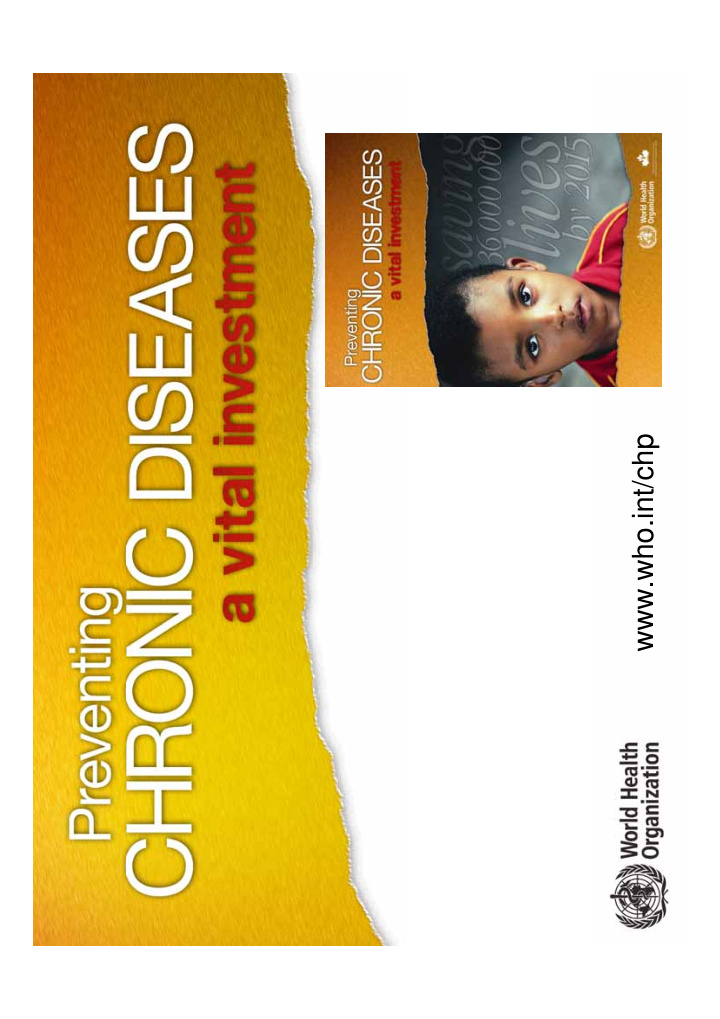



www.who.int/chp
Did you know??
Chronic diseases � Cardiovascular disease, mainly heart disease and stroke � Cancer � Chronic respiratory diseases � Diabetes
Risks are increasing
The economic impact: billions
10 widespread misunderstandings – and the reality "Chronic diseases affect mostly high income countries"
"Low and middle income countries should control infectious diseases before chronic diseases"
Reality: The poor are much more likely than the wealthy to develop chronic diseases, and more likely to die as a result "Chronic diseases affect mainly rich people"
Reality: Almost half of chronic diseases occur prematurely, in people under 70 years of age "Chronic diseases primarily affect old people"
"I know I can make it"
Reality: Chronic diseases, including heart disease, affect women and men almost equally "Chronic diseases primarily affect men"
Reality: Individual responsibility can have its full effect only where individuals have equitable access to healthy choices Chronic diseases are the result of unhealthy "lifestyles"
Reality: 80% of premature heart disease, stroke and type 2 diabetes can be prevented "Chronic diseases can't be prevented"
Reality: a full range of chronic disease interventions are very cost-effective for all regions of the world, including sub-Saharan Africa "Chronic disease prevention and control is too expensive"
Reality: these are the rare exceptions Half-truths: misunderstandings that arise from kernels of truth "My grandfather smoked and was overweight – and he lived to 96”
Reality: Death is inevitable, but it does not need to be slow, painful or premature "Everyone has to die of something"
The global goal � A 2% annual reduction in chronic disease death rates worldwide, per year, over the next 10 years. � The scientific knowledge to achieve this goal already exists.
9 out of 10 lives saved: low and middle income countries
Economic gain: billions
What works? Comprehensive and integrated action is the means to prevent and control chronic diseases
Recommend
More recommend